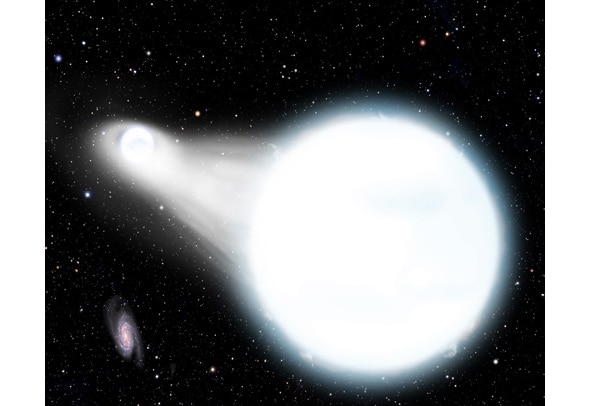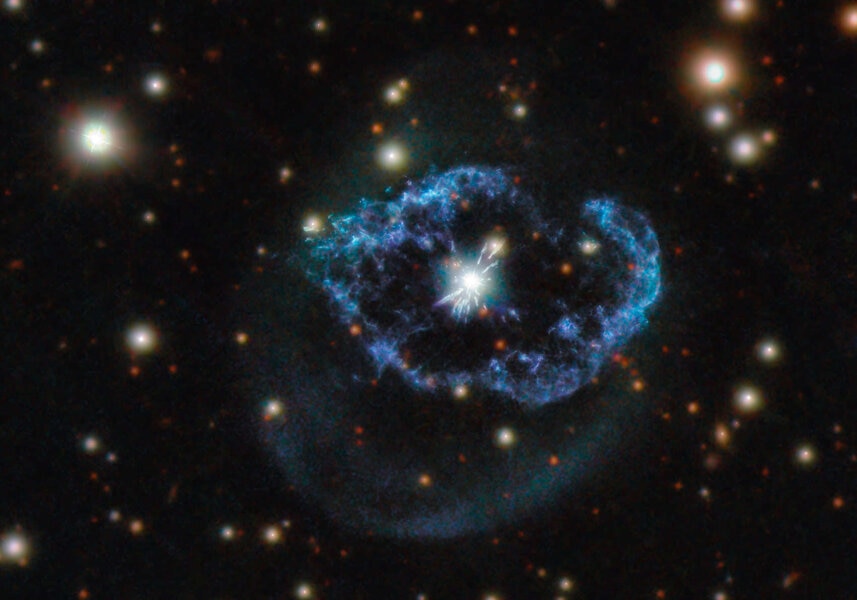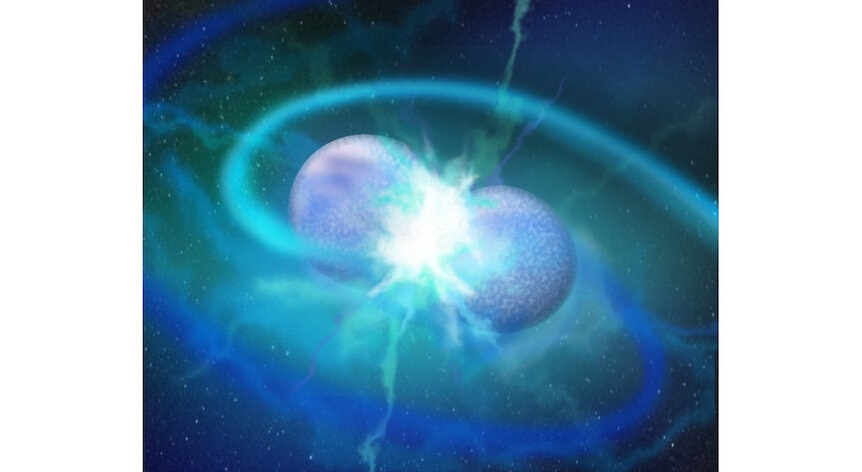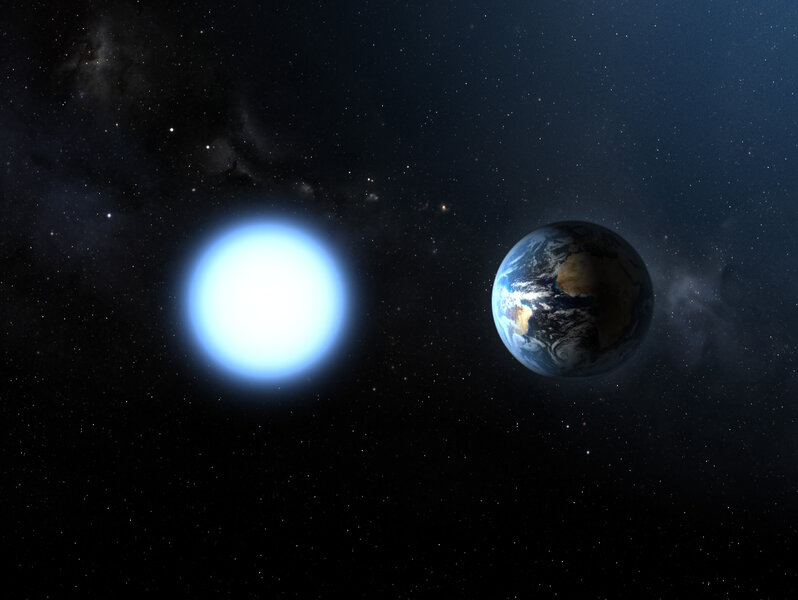Create a free profile to get unlimited access to exclusive videos, sweepstakes, and more!
White dwarfs eat other white dwarfs and then wear their undigested bits
Two newly discovered weird stars ate their companions.

It's not too often that a new kind of star is seen in the sky, let alone two examples of it. Especially when it comes to dead stars eating other dead star and leaving behind a star that looks like it's still dying but is in fact previously and still dead.
Yeah, let's back up a sec.
A star like the Sun generates energy by fusing hydrogen into helium in its core. Over time the inert helium builds up, and gets heavily compressed and terrifically hot. Eventually the core becomes totally made of helium, and radiates so much energy that the outer layers of the star expand to compensate for the extra heat. The star becomes a red giant.
Gas at the surface of this bloated star feels less gravity holding it on, but a huge amount of energy pushing it upward from below. Because of this the gas starts blowing away from the star, and over time the entire outer part of the star is ejected, exposing the core to space. We call that object a white dwarf. Specifically a helium white dwarf, since it's almost entirely made of helium.
Sometimes, though, there are different steps that happen between the star being a red giant and becoming a white dwarf. For example, if there's enough pressure on the core that the helium can start to fuse too. This makes carbon and oxygen, which usually sink to the center pretty quickly, leaving the helium floating on the surface with just a trace of carbon and oxygen that can be detected. We call these CO white dwarfs, since they're mostly carbon and oxygen, even though we only see small amounts of them on the surface. They can also drive fierce winds of gas away, creating lovely planetary nebulae.
So here's where things start to get weird. There's a kind of star where the core is not a white dwarf quite yet, but is well on its way. The outer layers are mostly blown off and just a thin layer of helium is left, which may still be fusing into carbon and oxygen. These stars have some characteristics that make them look like normal stars — what we just call dwarfs, confusingly — but they're smaller and fainter, so these are termed subdwarfs. They can be very hot, so they look like what we call O-type normal stars, and these are called sdOs, for subdwarf O stars.
Here's where things recently got even weirder. Astronomers found a pair of unrelated sdOs, both of which had surfaces mostly composed of helium (link to paper). One is called PG1654+322 and is about 9,000 light years away, and the other is PG1528+025 and is 23,000 light years from us.
Now mind you, most hot subdwarfs like these have at most a few percent carbon and oxygen on their surfaces, and even that much is rare. But these two? They have more than just a trace. Way more: While both have surfaces of about 60% helium, they have a whopping 15 and 25% carbon, respectively, and 23 and 17% oxygen.
That's a lot. Like a lot a lot. Where could all that C and O come from?
And here is where the weirdness peaks: They were both probably helium white dwarfs not long ago, and then ate their binary companions. Which were CO dwarfs.
Yeah, I know, what? Let's look at an example of just one pair to avoid more confusion. Basically, things started off long ago with two normal Sun-like stars orbiting each other. Over time, one died, expanding into a red giant, shedding its layers, yadda yadda, and became a CO white dwarf. The other star in the binary did the same thing, but became a helium white dwarf. So now we have two white dwarfs of different types orbiting each other.
Over time they spiraled together, possible by emitting gravitational waves, though the exact mechanism isn't important here. But here's a critical point: The CO dwarf was low mass, and that means it was bigger. White dwarfs are weird that way; they are so unimaginably compressed by gravity that quantum mechanics becomes important, and WM has weird rules. One of them is that matter in these conditions actually shrinks as you add mass, instead of getting bigger. So low-mass white dwarfs are actually larger than high-mass ones.
Why is that important there? Because the surface gravity of the smaller, more massive one — the helium one — is stronger, and as the two get closer the helium one can strip material off the surface of the other, essentially eating it. Eventually the CO dwarf is gone, consumed by the helium dwarf. The remaining object has a CO white dwarf core mostly covered by helium but will also have a lot more C and O than you'd expect, and looks more like a subdwarf than a white dwarf.
This is a pretty unlikely scenario, as you might expect, because you need pretty exacting conditions to achieve such a weird little object — called a CO-sdO — in the end. To find one is pretty nifty, but in this case they found two! Which means there are likely more out there waiting to be found.
Why is this important? Stars die in a myriad of ways, and understanding these pathways tells us about how stars live, how they die, and what's left after. Sometimes white dwarfs in binary systems merge and explode, creating extremely powerful supernovae, bright enough to be seen for billions of light years. Sometimes they merge and lack the mass to do this, and we're left with bizarre sdOs that will eventually just become plain old white dwarfs. The vast majority of all stars — literally more than 90% — will eventually become white dwarfs, so understanding these compact objects is part of understanding stars.
And stars are the building blocks of galaxies, which are the basic components of the Universe itself. And I think that's a pretty good reason to figure all this out. Plus? It's just cool.





























